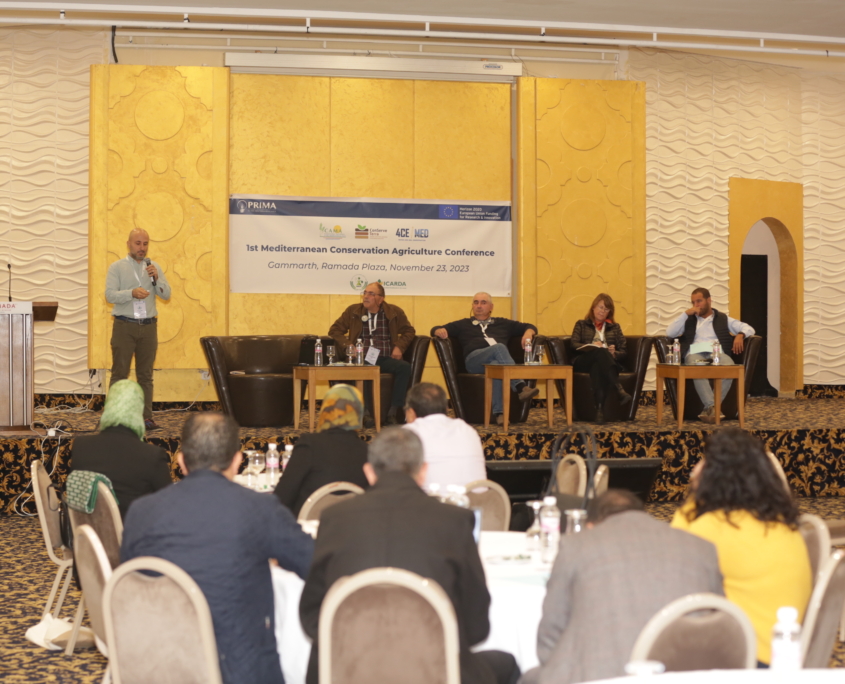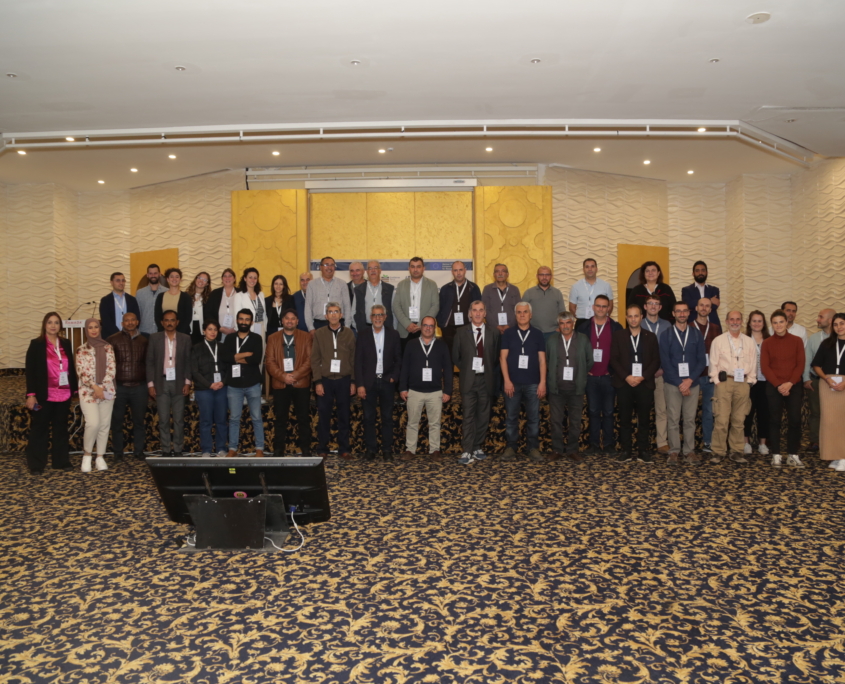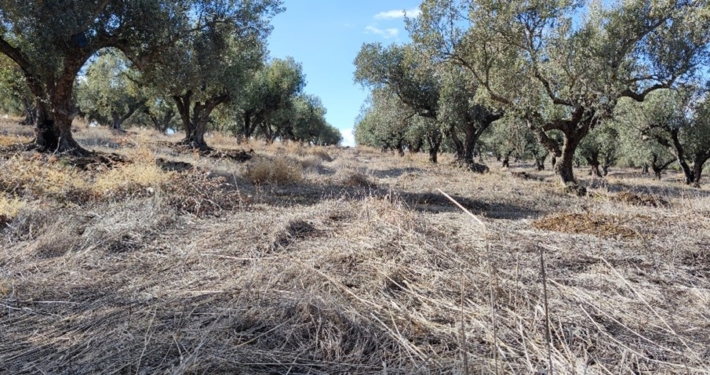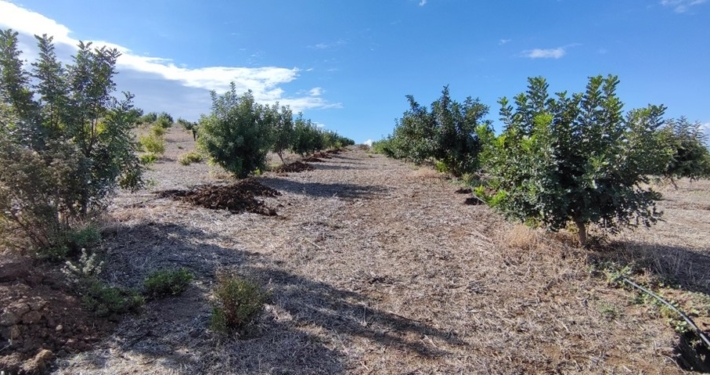
Hassen Ouerghemmi1, Zahra Shiri1, Andrea Monti2, Mia Schoeber3, Michele Rinaldi4 and Harun Cicek3
1 International Center for Agricultural Research in the Dry Areas (ICARDA)
2 University of Bologna (UNIBO), Italy
3 Research Institute for Organic Agriculture (FiBL), Frankfurt, Germany
4 Council for Agricultural Research and Economics (CREA), Foggia, Italy
Introduction
The first Mediterranean Conference on Conservation Agriculture (CA), held in Tunis, Tunisia, on 23-24 November 2023, was organized by three PRIMA EU-funded projects with a focus on CA: CAMA, ConServeTerra and 4CEMED. International Center for Agricultural Research in the Dry Areas (ICARDA) and National Institute of Agronomic Research (INRAT), in collaboration with the European Conservation Agriculture Federation (ECAF) and the “Association pour la Promotion d’une Agriculture Durable” (APAD) were also part of the organizing committee. The main objective of the conference was to share and discuss research results, practical experiences, and recommendations to strengthen CA initiatives and cooperation in the region.
CA, although known to be among the best strategies to mitigate the effects of climate change and soil degradation, lacks large-scale adoption in the Mediterranean region. Despite the concerted efforts to facilitate the acceptance of CA principles, reluctance remains to implement CA. Obstacles include social- and cultural misconceptions of CA, knowledge gaps, limited access to technology and the limited political attention that CA deserves as it is part of the solution to current global challenges. The projects CAMA, ConServeTerra and 4CEMED presented preliminary results and possible strategies to promote CA in the Mediterranean region to overcome these obstacles, which provided the evidence base for further discussions. Panels included scientists, farmers and policymakers, where the key knowledge gaps and adoption constraints were explored and discussed.
The conference confirmed the commitment of the CA community and revealed the untapped potential of CA in the region. The conference calls upon politicians, scientists, and farmers to recognize CA as a fundamental element to increase farm resiliency and to develop measures that support CA implementation in the region. Here we summarize recommendations that arose from the presentations and discussions.
Recommendations to farmers
The choice of farming methods is often related to traditions and family perceptions, and adapting practices like CA requires a degree of openness and the willingness to change. A few recommendations were presented during the conference that can help overcome initial reluctance and deal with challenges.
- Proactively explore and implement new practices. A meticulous attitude in land management, motivation and curiosity are the key success factors. It is also important to share your own experiences with other farmers and develop practices together.
- Understand your soil. Machinery and suitable crops depend on this.
- Establish and work together with farmer associations that provide direct seeding machines and repairing services, which are one of the key barriers in CA.
- Utilizing and visiting online resources can provide insights from CA experiences in other countries with similar conditions. Also, visiting other farms practicing CA in the region allows for firsthand experience and farmer-to-farmer knowledge exchange, which helps to learn from each other.
- CA cannot be implemented in the Mediterranean without the inclusion of forages in rotations. Including forage legumes like vetch in the rotation and crops with different root properties integrates livestock into the system and improves nutrient availability and soil structure.
- If you are starting CA, start with forages or low nutrient requiring crops such as barley or triticale. Do not start with wheat.
Recommendations to scientists
Scientists are urged to conduct more in-depth on-field research and provide the necessary scientific evidence to key decision-makers to encourage the development of suitable strategies. Recommendations are based on knowledge gaps that arose from the project work.
- While it is well known that no tillage positively affects soil biota and organic matter, a key challenge remains weed control, which is often controlled chemically with glyphosate. Furthermore, the herbicides that are needed for no-till pulse production are often not available in southern Mediterranean countries, or they are not affordable. Researchers should investigate alternative weed control methods that are chemical-free, such as strategic tillage in rows and the use of diverse crop rotations with legumes and crops that can suppress weeds.
- Next to controlling weeds, strategic tillage may also positively influence soil properties. To get a better understanding of interactions, the effect of one-time tillage on soil texture, organic matter in comparison to conventional tillage, and CA needs to be further investigated.
- A better understanding of the effect of crop rotations under CA in the Mediterranean climate is needed. Questions are related to which crops can improve soil health, increase water-use efficiency, and which legumes are suitable for local conditions. There is very little context-specific information available for forages and forage mixtures for CA systems.
- Camelina sativa is recommended to be incorporated into crop rotations. Camelina is a drought-tolerant crop and can be used as food and feed due to its high contents of unsaturated fatty acids. However, more research is needed on varieties and their potential in CA systems.
- Scientists are encouraged to contextualize the principles of CA, as CA practices depend on local conditions like soil structure and weather patterns. This also entails including regional parameters in manuscripts to contextualize the research.
- While the benefits of CA such as improved soil structure and farm resilience are widely accepted, the benefits of CA at the landscape level are not well researched. Having data on the impact of CA on erosion and water holding capacity can provide valuable arguments for policymakers to support CA.
- In Mediterranean landscapes, there is a trade-off between using crop stubbles as soil cover or for grazing. To allow crops for both uses, the effect of keeping less than 30 % cover on the soil must be researched. This includes looking at the impact of grazing in no-till systems and the number of livestock that can be supported by a system.
- Research under real field conditions can strengthen collaboration with farmers and develop pragmatic measures suitable for local conditions. This dialogic format intensifies cooperation between different stakeholders and encourages knowledge transfer.
Recommendations to policy makers
The implementation of appropriate policies can facilitate a favorable climate for investments and adaptation of innovations, while simultaneously catering to public interests such as safeguarding resources and mitigating the effects of climate change. To put CA on the political agenda, it is important for scientists to share research results and the role of CA to overcome challenges like soil degradation and water availability. Below, recommendations are given, which can encourage the uptake of CA.
- Recognize CA as a productive agricultural system and a strategy to optimize natural resource use and improve the resilience of Mediterranean farming systems.
- Provide subsidies for implementing CA practices such as no-till seeding, stubble retention and crop rotations.
- Support supply chain development and ensure accessibility of inputs like seeds for forage legumes, as they are an important component of CA.
- Create an environment that enables collaboration and coordination between farmers, research institutions and policymakers.
- Incorporate CA into national, regional, and local agricultural strategies.
- Integrate CA and soil modules with practical courses into university curricula and training programs for students, extension officers and farmers to improve the appreciation of CA practices.
- State-owned demonstrations farms can be managed as examples for CA, showcasing crop varieties, minimum tillage, crop rotations, cover crops and serving as a center for farmer training.
Field visit
The field visit to the family farm near Menzel Bourguiba was a great opportunity to showcase the successful implementation of CA in Tunisia. The farmer Chihab Wali and his family have been successfully practicing CA since 2005 and already exploring even more sustainable practices such as agroforestry. Mr. Wali also practices CA under his olive orchard. The soil under the olive trees have not been tilled for seven years and the vegetation is cut and used as forage and soil amendment. Exploring the resilient systems, Mr. Wali decided to plant carob trees in his farm and now further increasing the biodiversity and resilience of his farm by including forage shrubs such as Lucenea, Giliricidia and other between the trees. This will not only increase his biomass productivity but also improve soil fertility and will act as a buffer during the dry years. This visit was a great inspiring learning opportunity showing the agroforestry as the great next step after the CA adoption.
For more information, please contact
Harun Cicek harun.cicek@fibl.org
Michele Rinaldi michele.rinaldi@crea.gov.it
Mia Schoeber mia.schoeber@fibl.org
Impressions of the CA conference in Tunis, Tunisia
During a field visit a farm that successfully implemented CA was visited. Photos: Harun Cicek





